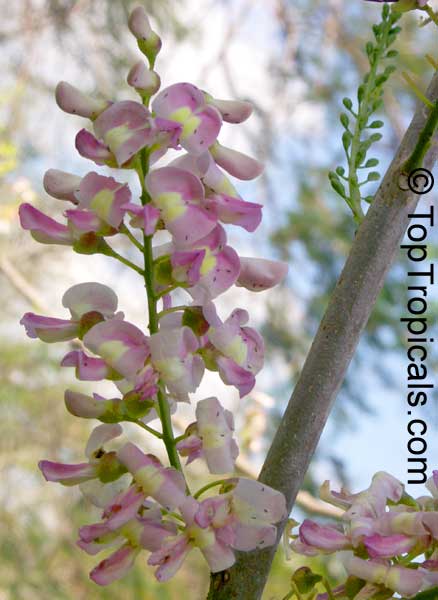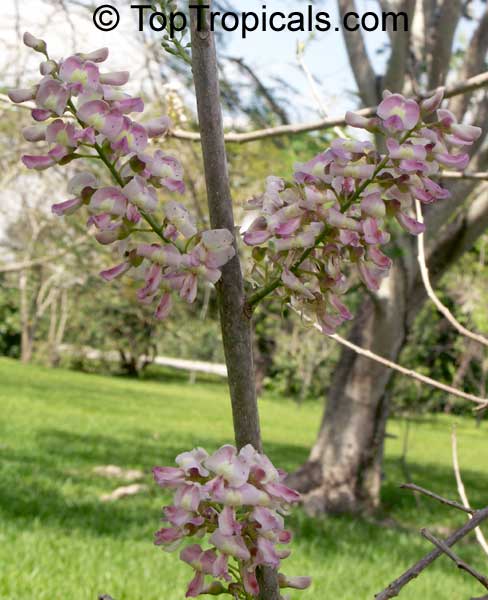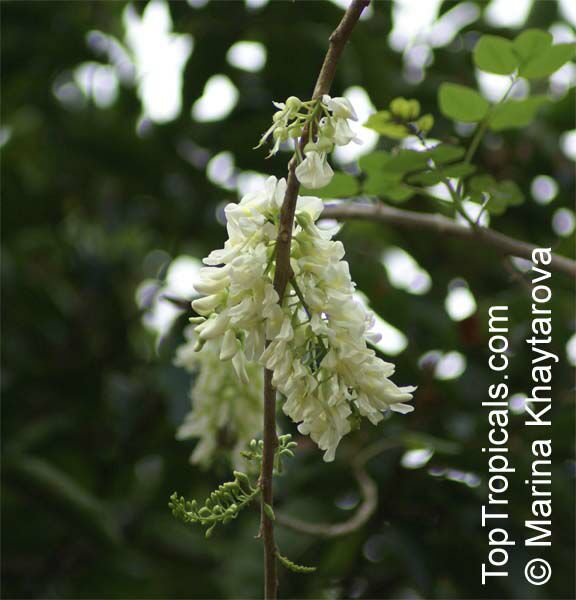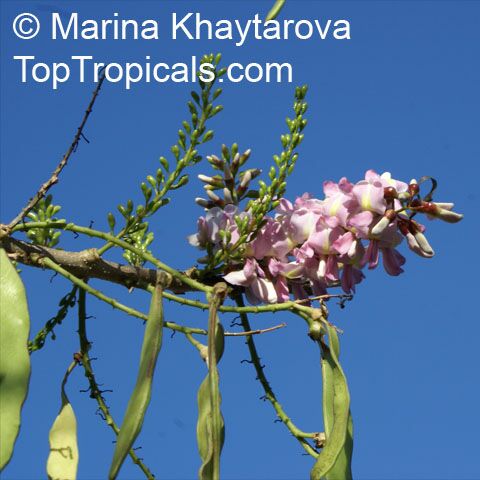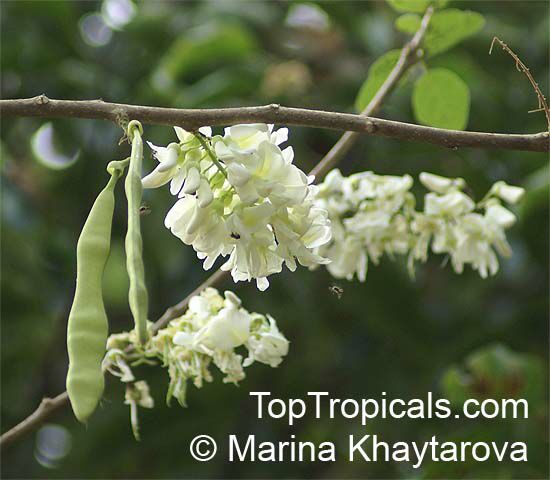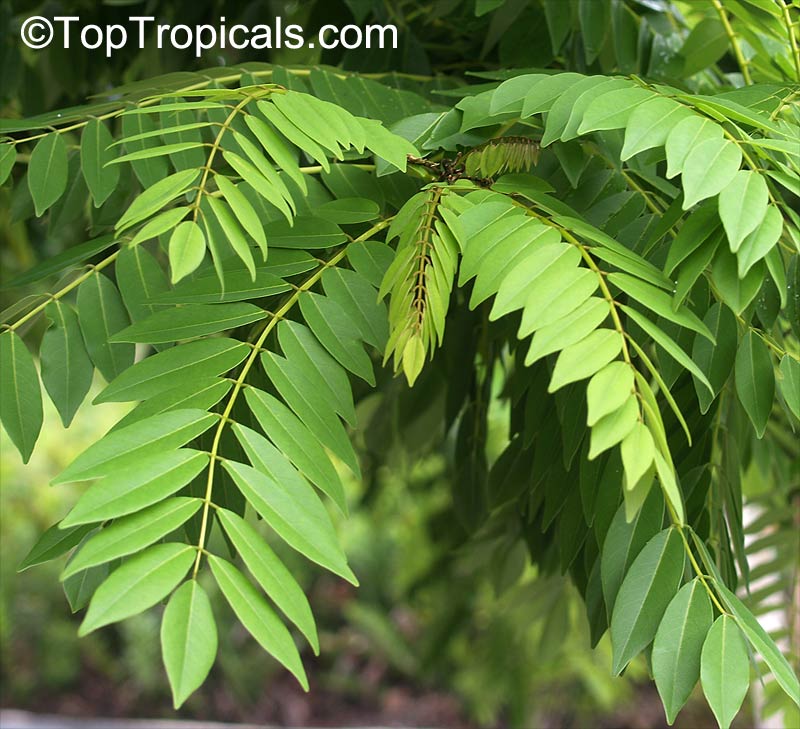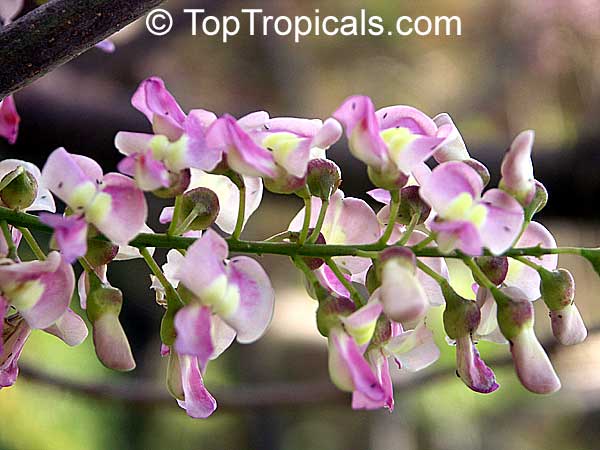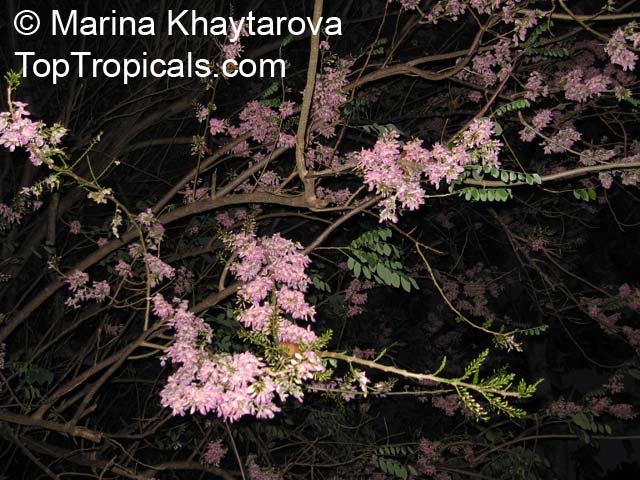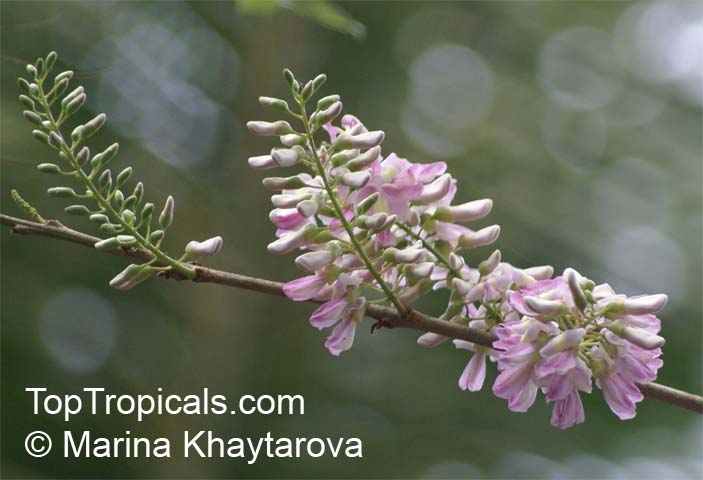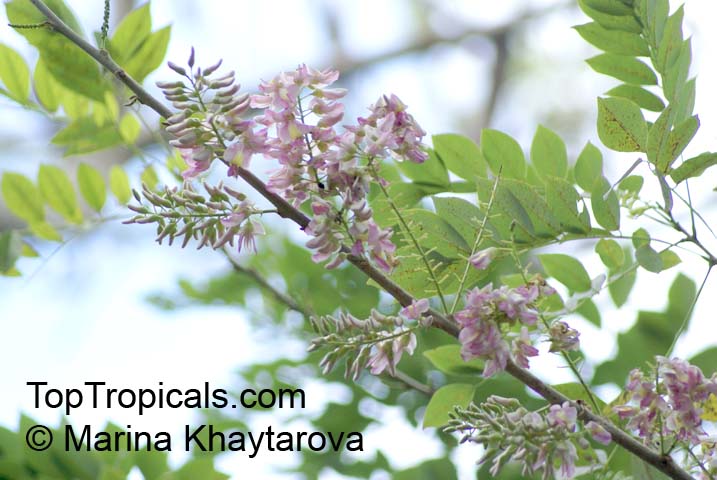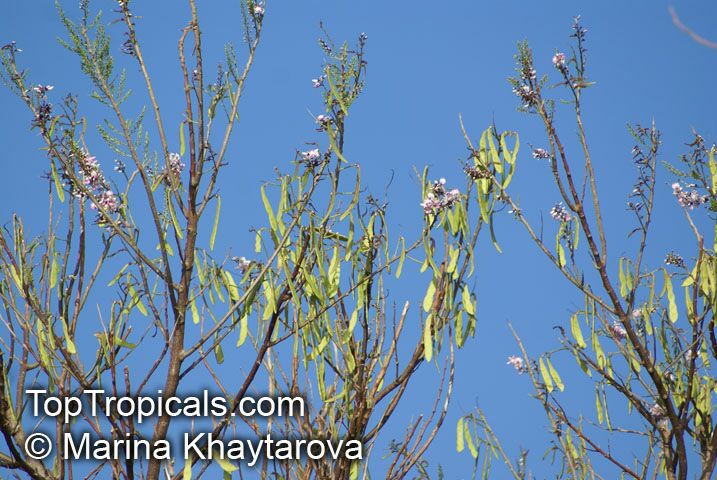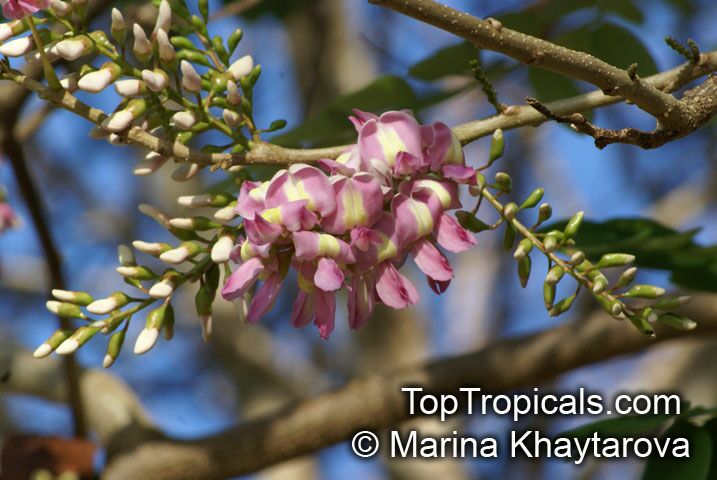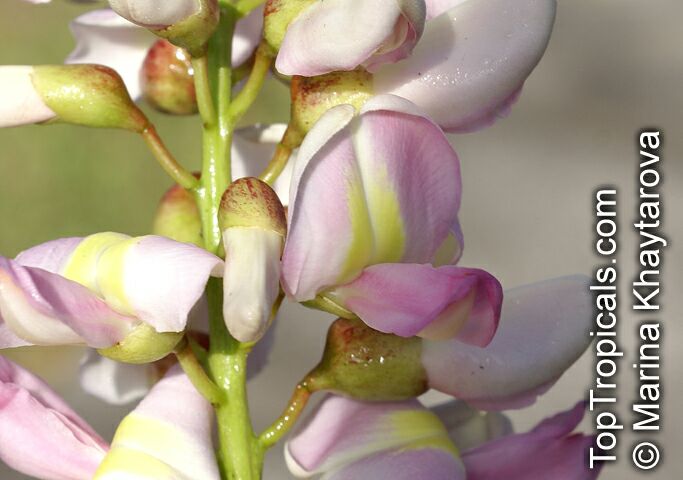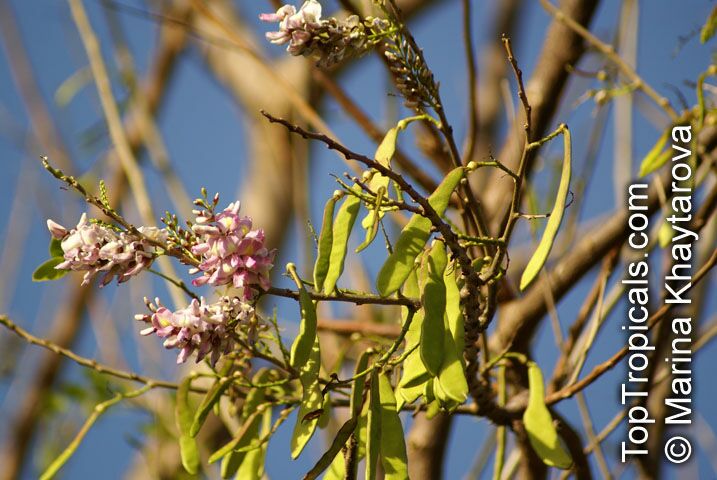Gliricidia maculata (Gliricidia)
Top Tropicals Plant Encyclopedia
Botanical names: Gliricidia maculata, Gliricidia sepium
Common names: Gliricidia, Madre de Cacao, Madura
Family: Fabaceae
Subfamily: Faboideae
Origin: Central America




Gliricidia maculata, native to Central America, is a small evergreen tree with a fast growth rate. It is ideal as a livestock fodder and as a plantation shade and green manure due to its acceptance of different types of soils and its drought resistant qualities. At maturity, the height of the tree can measure between 10-20 ft and has a reddish-brown bark. It blooms during the dry season and produces pink flowers in sprawling clusters.
This tree is well-suited for areas with full sun exposure and can tolerate moderate water. It is cold hardy to temperatures of at least 30°F, allowing it to survive in harsher climates for a short amount of time. Generally, it grows in USDA Zone 10-11 and is easily propagated through basal cuttings or air layering.
In order to keep the tree healthy and ensure optimal growth, it benefit from pruning as mature size is quicker to reach. For colder climates, especially in the northern regions of USDA zones, it can be grown in a pot, but with care it should still be ok. To ensure the tree maintains its health and growth, fertilizers can be applied once a month with a mixture of low nitrogen and high potash. It's important to keep the area the tree is growing in weed-free and the soil at a pH between 6.5-7.5 by adding slow releasing mulches and compost.
